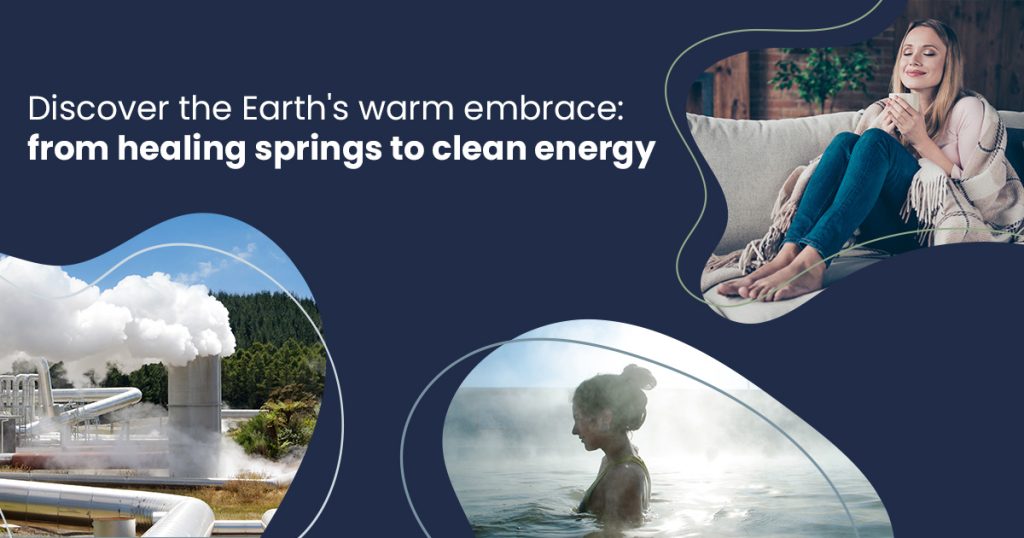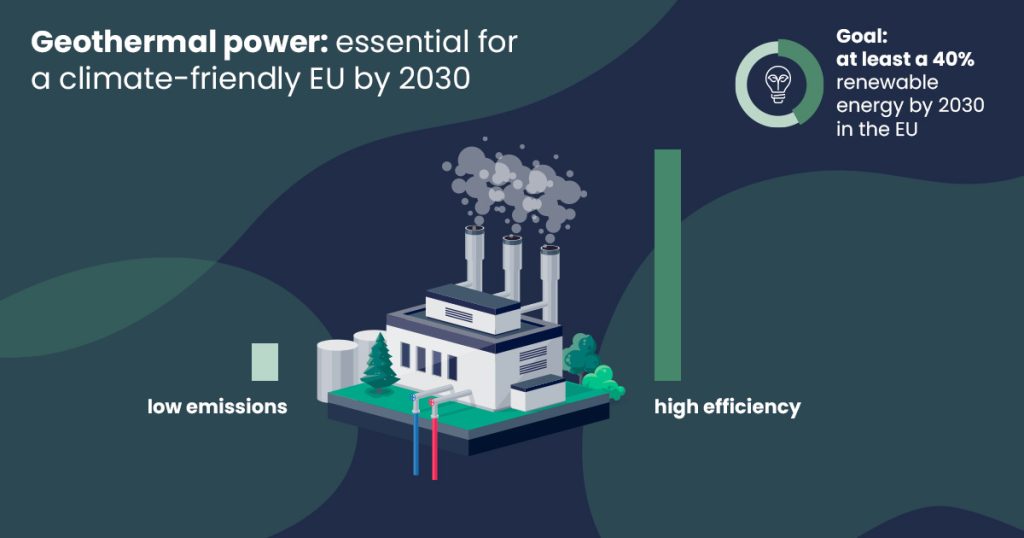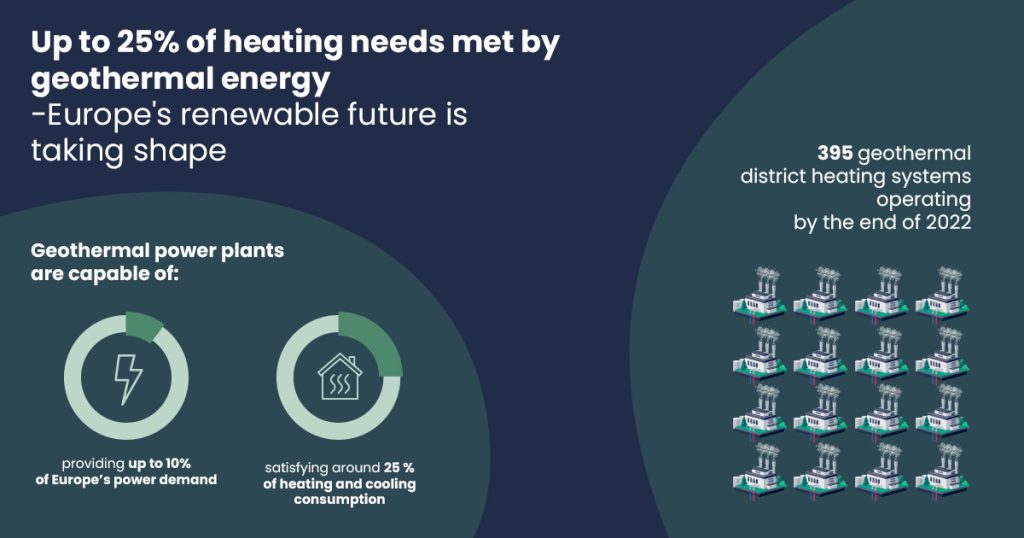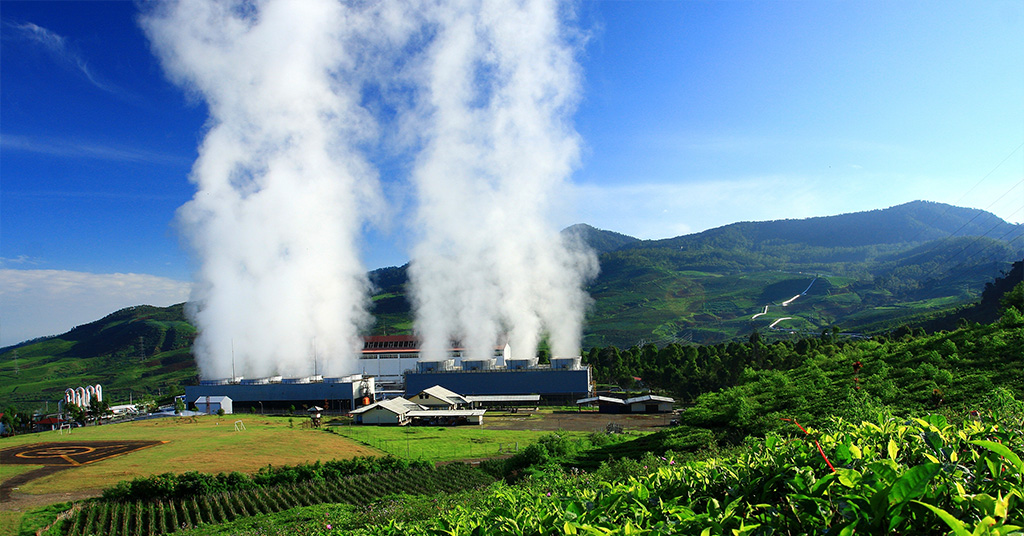What will you read about?
- The importance of geothermal energy in the EU
- How geothermal energy works
- Socio-economic and environmental benefits
Power from the ground
Geothermal energy is an essential renewable resource globally and especially in the EU. It provides a sustainable and reliable source of power with minimal greenhouse gas emissions, contributing to reducing the carbon footprint and enhancing energy security. For the EU, geothermal energy plays a crucial role in meeting renewable energy targets and decarbonization goals, particularly in the heating and cooling sectors. This energy source also offers significant socio-economic benefits, including job creation and the reduction of energy dependency from non-EU countries.
Can you recall seeing a colossal volcano erupting in the news with the ground trembling and molten lava bursting forth, painting the sky with fiery reds and oranges? The raw power and majesty of an erupting volcano are a humbling reminder of the Earth’s dynamic forces. This spectacular display of nature’s sheer strength is also a testament to the immense geothermal energy locked within our planet. As the lava cools and solidifies, it forms the rich, fertile soils that have sustained countless civilizations for millennia.
Now imagine yourself sinking into the warm, soothing waters of a natural hot spring in Europe. From the healing thermal baths in Tuscany, renowned for their therapeutic benefits, to the iconic thermal baths in Budapest, celebrated for their restorative properties, these geothermal wonders offer both relaxation and health benefits. The warmth of the water, heated by the Earth’s internal energy, eases muscle tension and revitalizes the spirit. This serene experiences are just two examples of how geothermal energy can be utilized.
The same geothermal forces that drive volcanic eruptions can be harnessed to provide clean, sustainable energy, illuminating the incredible potential beneath our feet. Beyond its recreational uses, geothermal energy can power homes, industries, and entire communities, demonstrating how nature’s raw power can be harnessed to create comfort and sustainability in our everyday lives.
Ready to dive into this world of natural wonder and feel the connection to the Earth’s deep, enduring energy?

How is geothermal energy utilised in the EU?
Geothermal energy might be instrumental in helping the EU achieve its Fit for 55 targets, which aim to reduce greenhouse gas emissions by at least 55% by 2030. This renewable source of energy replaces fossil fuels, aligning with the EU’s updated Renewable Energy Directive that sets enhanced targets for renewable energy usage.
By 2030, the EU aims to achieve at least a 40% share of renewable energy in its energy mix. Geothermal energy, with its low emissions and high efficiency, is a key player in reaching these goals. The ability to provide baseload power and heating makes it particularly valuable in achieving the stringent emission reduction targets.

Saving on carbon
Using geothermal energy can reduce eliminate up to 80% of fossil-based energy consumption and is more cost-effective in the long run. Geothermal power plants and heating systems use the Earth’s internal heat to generate energy, while leaving carbon where it should be: in the ground.
This leads to a significant decrease in carbon emissions and helps in combating climate change. Moreover, geothermal energy systems have a longer lifespan and lower maintenance costs, further enhancing their cost-effectiveness compared to traditional fossil fuel-based systems.
The cost of installing a geothermal heat pump system ranges from €13,000 to €30,000, depending on the system size and loop type (larger systems for industrial use can cost significantly more). However, the operational costs are 25% to 65% less than those of conventional heat pumps, making it an economically viable option for both large-scale and small-scale applications. The initial investment can often be recouped within a few years due to the savings on energy bills and the lower maintenance costs associated with geothermal systems.
Ways to produce geothermal energy
The technology harnesses the heat stored beneath the Earth’s surface, extracting this heat using wells and converting it into electricity or utilizing it directly for heating. The main technologies involved include dry steam, flash steam, and binary cycle. Dry steam plants take steam out of fractures in the ground and use it to directly drive a turbine that spins a generator. Flash steam plants take high-pressure hot water from the ground and convert it to steam to drive a generator’s turbine. Binary cycle power plants transfer the heat from geothermal hot water to another liquid that boils at a lower temperature than water. This secondary fluid is vaporized and used to turn a turbine and generate electricity.
Green energy source for people and businesses
Many, vastly different industries can utilize geothermal energy for various processes from powering your own house, through keeping the water at an optimal temperature for fish farming, to heating buildings for the guests in the hospitality sector.
However, the consistent and reliable heat supply is particularly beneficial for industrial processes that require stable temperature control. For example, in the agricultural sector, geothermal energy can be used for greenhouse heating, which can extend growing seasons and increase crop yields. Smaller communities can benefit from geothermal heating and cooling networks, significantly reducing their reliance on traditional energy sources. Residential geothermal heat pump systems can provide heating, cooling, and hot water for homes, making them an eco-friendly and cost-saving option for families.
From a larger perspective, investing in geothermal projects creates numerous job opportunities across different sectors. For instance, the construction of geothermal power plants requires a skilled workforce for building and maintaining the infrastructure. This includes roles in engineering, drilling, construction, and plant operations. Nevertheless, geothermal projects often lead to indirect job creation in supporting industries such as equipment manufacturing, material suppliers, and service providers like restaurants and retailers.
Much potential
In the EU, geothermal energy currently generates just over 1 gigawatt electric (GWe) as of 2021 and countries such as Italy, Germany are leading in geothermal energy production. By the end of 2022, 395 geothermal district heating systems were operating, which means that the untapped potential for this technology is significant, with geothermal power plants capable of providing up to 10% of Europe’s power demand and satisfy around 25 % of heating and cooling consumption. By switching from fossil fuels to geothermal energy, the EU can decarbonize up to 25% of the population’s energy needs. The geothermal energy sector in Europe has a high growth potential, supported by favourable policies and investments aimed at increasing the share of renewables in the energy mix.

By developing domestic geothermal resources, the EU can also reduce its reliance on imported fossil fuels from non-EU countries. This not only enhances energy security but also supports the transition to a more sustainable and self-sufficient energy system, promoting both economic and environmental sustainability.
In a nutshell
As we can see, geothermal energy is beneficial because it provides a reliable, sustainable, and low-emission source of power that can significantly reduce our reliance on fossil fuels. It offers substantial cost savings over time and supports industrial, community, and residential energy needs.
Geothermal energy an essential player in the transition to renewable energy and the fight against climate change: by harnessing the Earth’s natural heat, geothermal energy aligns perfectly with the EU’s Fit for 55 goals and contributes to a greener, more sustainable future.
Sources and references:
https://www.europarl.europa.eu/RegData/etudes/BRIE/2023/754566/EPRS_BRI%282023%29754566_EN.pdf
https://energy.ec.europa.eu/topics/renewable-energy/geothermal-energy_en
https://www.nationalgeographic.com/environment/article/geothermal-energy




